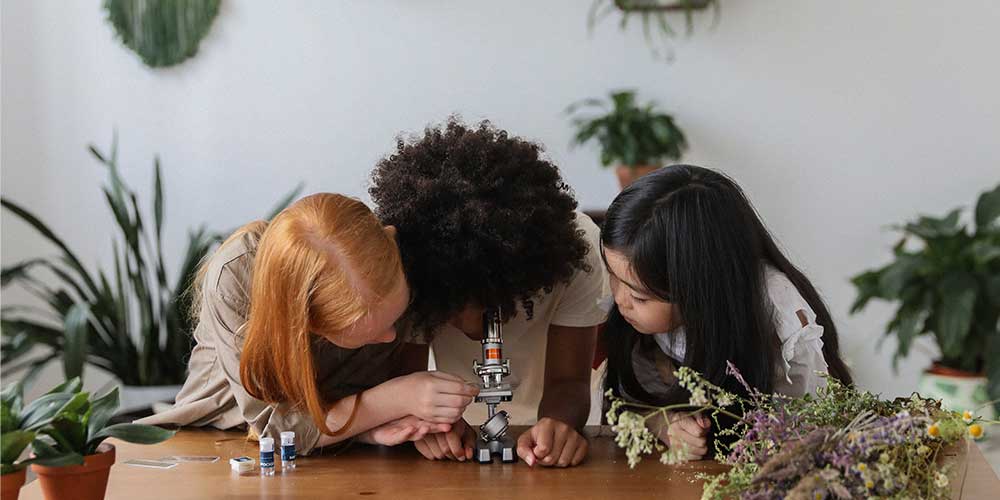Chapters:
There are some subjects that we find easy to study both at home and at school, like English - all you need is a paper and pen and away you go! Other subjects seem to work best at school. Science is often one of those subjects that makes sense in the lab, as seeing scientific principles in practice in front of your eyes makes them memorable. Trying to improve your science skills outside the classroom can be can be scary and confusing, but it doesn’t have to be!
To be a good science student you need to be engaged in the subject. This only happens if you know the importance of the following topics.
Take a look at the following topics and try to turn the experiments into games on weekends! You may find that you learn science best when you’re not actively trying to learn. 🤓

Topic 1 : Energy
What are the main types of energy?
Energy can be a difficult topic to understand. Follow our advice and you’ll learn all about it in no time. Once you have the basics down, you’ll know why this topic is so important. ⚗️
Firstly, we have to look at what types of energy we’re working with before we can learn about anything else:
- Chemical energy 🧪
- Electrical energy 🔌
- Gravitational energy 🍃
- Kinetic energy 🕺
- Mechanical energy 🔩
- Nuclear energy ☢️
- Solar energy ☀️
- Sound energy 🔊
- Thermal energy 🔥
- Potential energy 🌾
Don’t be put off by this long list of energy types. We’ll break it down and suggest examples from your daily life to help you understand.
What is chemical energy?
This type of energy comes from the bonds between molecules. The food we eat counts as chemical energy!
Where does electrical energy come from?
This energy comes from tiny charged particles called electrons. Lightning and the electricity in our house are both examples.
Who needs gravitational energy?
You remember that man who watched an apple fall and thought of gravity? This energy type is basically just that. Gravitational energy comes from the gravitational force that surrounds the planet we live on.
Do I use kinetic energy?
Do you like to move or dance? You won't realise it, but you are producing kinetic energy.
Where do we find mechanical energy?
The tension stored within objects is known as mechanical energy. A simple way of seeing this is a stretched rubber band.
Why do we use nuclear energy?
Not as new as you think, nuclear energy has only recently been turned into electrical energy. We get this energy when the tiny atoms that make up the universe are joined together or split. These splits do not give off harmful chemicals but they can be very unstable.
What is solar energy?
Solar energy is any energy that comes from the movement of light, and our main source is the sun.
Examples of sound energy?
Have you ever seen those videos where they make paint move with just music? Well this is a great example of sound energy. The vibrations of an object do create sound.
Do I use thermal energy?
Thermal energy is created when molecules move, and the energy that comes from that movement is thermal energy. Fires and certain light bulbs 💡 create thermal energy.
What about potential energy?
This is when an object has the potential to be any of the above types, but it is waiting for the situation to be perfect.

Topic 2: Energy transfer
What is an energy transfer?
Now we can look at the next part of learning about energy, but first we need to understand a certain rule about energy.
This rule applies to any type of energy listed above.
Have a look at some examples of the transfer of energy and some experiments you can use to learn about them. 😲
What is an example of transferring solar energy into chemical energy?
We all know the process known as photosynthesis. So through this process plants🌿 take the energy from the sun and turn it into food for other means.
During photosynthesis the plant gives off certain chemicals and through a simple water experiment we can see how easily plants photosynthesise and give off these chemicals!
How can I get my family to transfer chemical energy to kinetic energy?
This experiment will be fun for the whole family. Take something your family enjoys eating and put it out on a table. However, if someone wants some of this treat, they must eat it and then dance. 💃
This is the perfect example of turning chemical energy (the food you eat) into kinetic energy (the dance moves).
Is it safe to transfer chemical energy to thermal energy?
This type of energy transfer is very simple to represent, by burning a candle,🕯️ or starting a fire 🔥. When you do this, you are changing chemical energy (found in the wax or the wood) into thermal energy (the fire). This can sound scary. You must ask an adult to help you be safe with fire and always make sure the fire is put out before you leave it.
However, there is a better known version of this energy transfer, and that is the burning of coal that eventually gets transferred into electricity. Thankfully, there are many more positive ways of getting energy that don’t leave harmful chemicals in the air around us🌱.
There are, of course, many more types of energy transfer. However, not all of them are used on a daily basis. All good scientists, young or old, recognise the need for society to work on more renewable forms of energy. ☀️
Topic 3: The galaxy around us
How do I try to understand this?
Not everyone wants to learn about our planets and their order. However, learning about the basics when it comes to space 🌌 and galaxies is an integral part of understanding key elements in physics, like gravity.
We can first look at what a galaxy is and all the parts that come after 😄.
What is a galaxy? 💭
In simple words, a galaxy is a big group of stars ⭐ and other space stuff. It does spin around a centre of gravity, and they are huge with millions of stars in them. Galaxies form part of the universe, which, according to scientists right now, has billions of galaxies - some of which we still don’t know anything about at all.
Where are we?
Our galaxy is called the Milky way, a cluster of 3000 galaxies in the shape of a spiral. 🌀
What is our solar system like? ☀️
Firstly a solar system is any system of planets orbiting a host star. (our host star is the sun)
We have 8 planets (or 9, but that is still up for debate!). In order they are:
- Mercury ☿️
- Venus ♀️
- Earth 🌍
- Mars ♂️
- Jupiter ♃
- Saturn 🪐
- Uranus ♅
- Neptune ♆
- Pluto (technically a dwarf planet) ♇
Each has their own special characteristics and is visible from earth at different times of the year. 🔭
One way to improve your understanding of this topic is to go to a planetarium or to create your own fun space night at home 🌌. Use this as your experiment for learning about this topic, cutting out all the lights to watch shows about our planets. Investing in a telescope is not something everyone can do but you could try making one yourself.

Topic 4: Life cycles
While topics such as energy, energy transfer and the galaxy are studied very frequently, we sometimes forget about the topic of life cycles in science.
Life cycles are important as they are the basis of all life existing on earth.. From plants to lizards, cats to fish, every living being on our planet goes through a life cycle.
What’s the deal with plant life cycles? 🍃
You can approach learning about life cycles in two ways, by looking at plants and by looking at animals. Let’s start with plants - they might have a life cycle with more steps but experiments related to the plant life cycle are easy to do at home.
Start by taking some seeds from any vegetable or fruit you have at home (following the viral trend. Try an avocado seed and watch as it sprouts!) 🌱 Then we can look at how it grows into a tree or just a small sprout. The avocado tree will probably not reach maturity as quickly as a butternut or sweet potato. Going any further with the plant life cycle would require the plant to grow a flower, become pollinated and make the vegetable or fruit that will help continue the cycle.
How are animal life cycles different?
The second way to learn about life cycles is by looking at animals. It is important to know that there might be one basic life cycle, but, depending on the type of animal, you might have a few changes along the way.
We only have four stages for the simple cycle;
- Gestation – The development of an animal 🤰
- Early Growth – This is the growth before reaching maturity 👶
- Creating new life – This stage happens after maturity 👫
- The end of life – All animals will die at some point ⚰️
These stages can be very complicated 🐙 in some animals and simple 🐏 for others.
Learning about this cycle is key to understanding concepts like evolution, classification, life and death, and medicine.
Experiments for teaching life cycles in animals can be complicated and take a long time, unless you use an animal that has a short life cycle. You could look at an orchid mantis (a prettier version of a praying mantis), a butterfly or another insect that you feel comfortable with. Ant houses are available all over the internet and can last years, creating a fun interactive projecta and kickstarting a love of biology that you didn’t know you had in you.
This is just the beginning
Students who find other ways of learning often do better compared to students who don’t.
There are so many more science topics that we could go into. However starting with these four topics will get you into the right space for a fun and eventful science experience at school.
If you’re still struggling to really connect with science, Gostudent has a great team of online tutors to help you with your science journey today!











